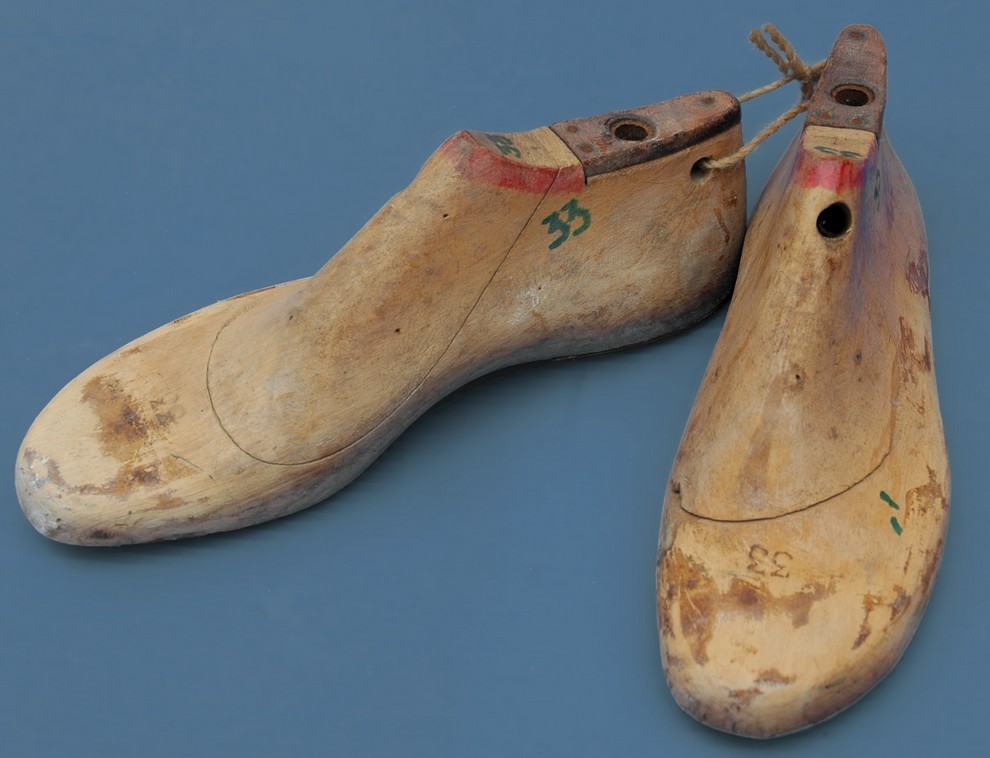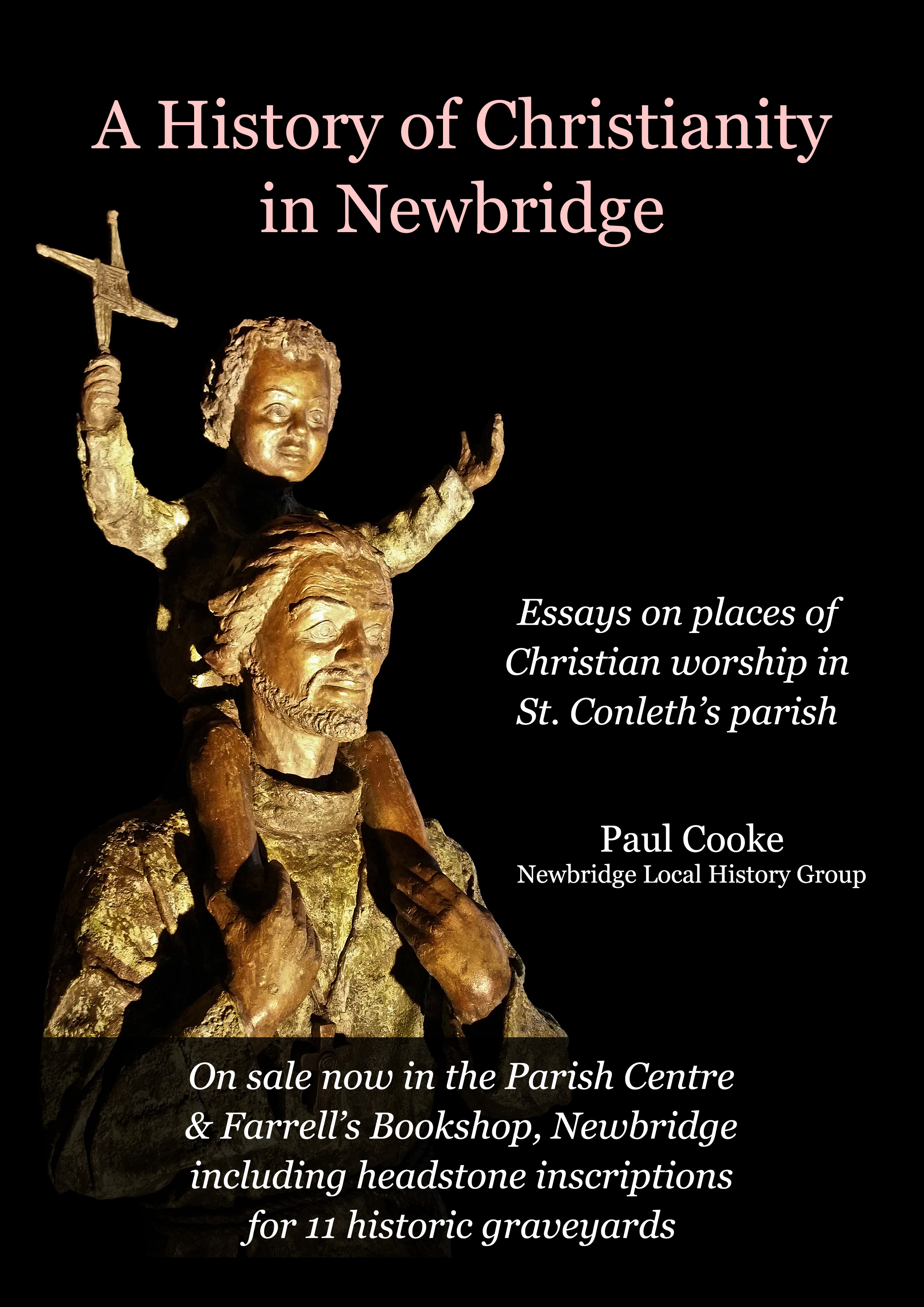The Last Factory
The Last Factory
A factory for the manufacture of lasts, which were used in the shoe making industry, existed in Newbridge from around 1936 until it closed in 1960. Its full title was “The Irish Last Works”. It was set up in the officers’ stables of the old military barracks, located at the now right hand side of the entrance to Cutlery Road opposite McCabe’s and Cosgrove’s. The founder of the factory was a Mr. Whitton from Northampton, which was the centre of the shoe making industry in England at the time. Some workers came over from England and two local men, Bob O’Sullivan from the Curragh and John Tidd from Newbridge, were sent over to England for training. It was a small factory with a workforce of no more than fifteen or so at a time. Some of the work force was very skilled and included turners, who worked on the lathes and others who filled the positions of model maker, jointer, plater, toe maker and finisher.
A “last” is a mechanical form that has a shape similar to that of a human foot and is used by shoemakers in the manufacture of all types of footwear. It is the solid form around which the shoe is moulded and it must represent the anatomical information of the foot. Though a last is made approximately in the shape of a human foot, the precise shape is tailored to a particular kind of footwear, including men’s, ladies and children’s, along with their various sizes and widths. For example, a boot last would be designed to hug the instep for a close fit and certain shoes may have a round, square or a pointed toes and also different heel heights. As you can imagine, this meant that there was a huge selection of lasts for manufacturing, not forgetting that there was also a left and a right each time. The shoe factories supplied paper patterns of the shoes required and the skilled workers in The Irish Last Works in Newbridge used these as their template. 
Historically, lasts were typically made from hardwoods or cast iron because these materials retain their shape even when in contact with wet materials, such as leather, and when subjected to the mechanical stresses of stretching and shaping shoes on them. Canadian maple, an imported hardwood, was used by the Newbridge factory as the raw material for their lasts. The timber was delivered in block form to the factory and these blocks were reduced in stages to suit the required shoe form. The skilled work was very exacting and a significant error at any stage of the process could result in the total waste of the work to date and the scrapping of the last. Sometimes an error could be rectified if the missing piece could be found in the shavings and glued back into place. An obvious by-product of the production process was the accumulation of wood shavings and off-cuts of maple. Some Curragh horse trainers benefited from the shavings as bedding for their horses. Maple, being a hard wood, burnt very well and the off-cuts provided fuel for the fires at home. Some even found their way into the pot-bellied stove in Neeson’s public house (now McDonnell’s).
The initial personnel who came over from England were Bill Ancliffe, Harry Bates and Russell Morley. They formed the original management team; Russell Morley returned to England after a short period. Bill Ancliffe was the first manager and resided with his family in Lower Eyre St. next door to Hensey’s in Canning Place. Harry Bates was the assistant manager at the start. He married Nan Baker from The Crescent and they later resided in Moore Park. In the early 1940s, Bill Ancliffe surprisingly did not return from holidays one year and was replaced by Harry Bates who held the position of manager until the factory closed in 1960. Two of the longest serving employees were John Tidd (finisher), from the Barracks, and John Anderson (model maker), from George’s St. and both worked there until its closure. Bob O’Sullivan (turner), from the Curragh, was also one of the original employees. His brother, Jim O’ Sullivan from the Market Square, joined the company in 1941 and was trained as a toe-maker by Billy Keeley from the Barracks, whom he replaced in that position when the latter emigrated to England. Eddie Grace of the Crescent, Addie Casey from Edward St. and Mick Brick from the Curragh worked as platers for many years. Phil Murphy from the Curragh was employed as a jointer and Jack White from Kildare town worked on the lathes. The following were general operatives at various periods down through the years and you can see that in many cases it would have been their first employment: Paddy Anderson, George’s St.; Pat Hogan, Rathfield; John Smith, George’s St.; Jack and Seamus Casserly, the Curragh; Michael Tidd, Athgarvan and his cousins Paddy and Seamus Tidd from the Barracks (all nephews of John Tidd, one of the first employees); John Joe Moran, the Barracks; Mick Behan, and his brother, Tommy, Moorefield; the Crummy brothers, Frank, Pat and Jim from Lower Eyre St.; Sean Scanlan, the Crescent; Frank Whyte, the Barracks; the Carter brothers, Noel and “Foxy” from the Curragh: Lewis Casey, Edward St.; Hugh Kildea, the Curragh and Gerry Fogarty, Ballymany Cottages. There would have been one secretarial/administrative person in the office at a time and this position was filled by Mary Anderson, George’s St.; Teresa McCarthy, the Curragh and Mary Barrett from Ballymany.
Overall, general conditions in the factory were quite good for the time that was in it. Pay for the skilled worker was better than most other employments in the locality and payment was based on piece-work. Their average wages in 1960 at the closure was 5 pounds 12 shillings per week when other employments in the town were paying 3 pounds odd per week. The general operatives also received more than the going rate in the other local factories. Work started at 8 o’clock and if you were late and the gate was closed, you had to wait outside for the Manager to let you in. The skilled workers were eventually unionised following a meeting in McCabe’s public house with an official from the Woodworkers union.
The end came rather suddenly in 1960 when the original owner’s son, Bob Whitton, became the new owner. Incidentally, he was married to a sister of Hugh Neeson, the publican. He had an interest in a factory in Belturbet, Co. Cavan named Irish Shoe Supplies. He closed the factory in Newbridge and set up a division making lasts in Belturbet called Miller Lasts. Harry Bates, John Tidd and John Anderson relocated there in 1960. The other workers were offered work in Irish Ropes which some of them took, while others emigrated or found alternative employment.
(I wish to acknowledge the assistance of Mr. Jim O’Sullivan of Pairc Mhuire, and others, and I would also welcome any additional information regarding the factory)
Frank Boland, © 2015.
WWW.newbridgehistory.org

